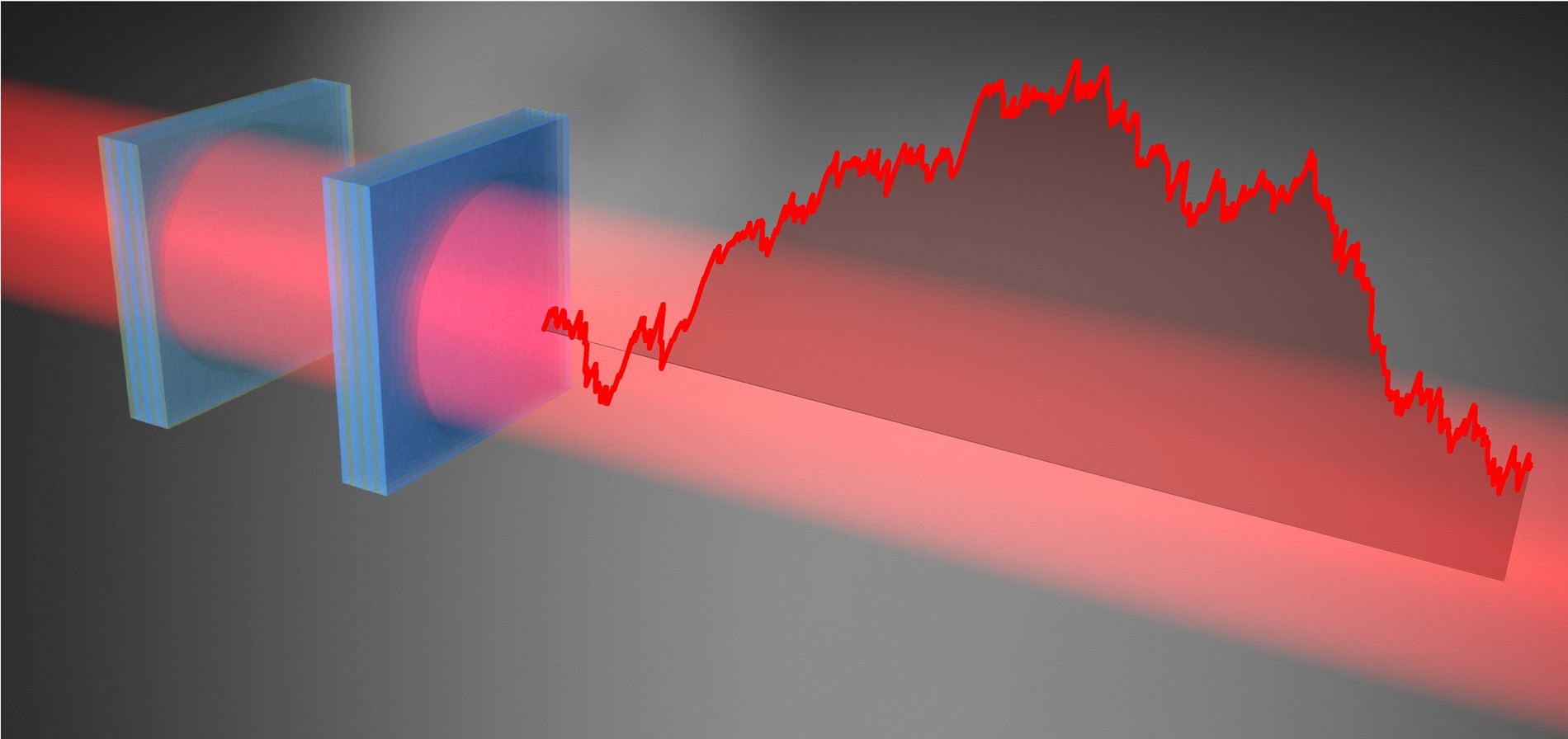March 26, 2024
From monitoring pregnancies to distance detection in cars, light sensors are a workhorse of modern technology. But do we really understand the data they give us? In a surprising find, three AMOLF researchers show evidence of a tendency to detect extreme values more often than average ones, caused by the way our sensors work. This so-called arcsine behavior causes lows and highs to occur much more often than the average in between. The finding may have a great impact on sensing technology, write Vashist Ramesh, Kevin Peters and Said Rodriguez in the prominent scientific journal Physical Review Letters.
“Suppose you’re measuring the intensity of light, which varies randomly around a long-term average. Your sensor doesn’t take an instantaneous snapshot: it collects light for a certain amount of time, giving you what we call the time-integrated light intensity. How often do you expect that value to coincide with the average?”
It may seem a trivial question, but AMOLF group leader Said Rodriguez likes to test and challenge assumptions. And rightly so, because the naive answer—”most of the time”—turns out to be wrong. Extreme deviations from the average are in fact most likely to occur.
In experiments published in Physical Review Letters, Rodriguez’ team found that individual measurements of the time-integrated intensity of light tend to show mostly low or high values. Even if you collect many of such measurements hoping to average out, the extremes keep occurring most often. That is a big break from the familiar Bell curve from statistics, where most measurements cluster around the average.
Arcsine laws
“This all goes back to French mathematician Paul Lévy in the 1940s”, explains Rodriguez. Lévy was trying to describe the dance of pollen dust floating on a water surface, which was being bounced around by the random impacts of surrounding water molecules.
Using the arcsine function, which peaks far from the center of the graph, Lévy produced a formula that calculates certain random processes like the dancing pollen that favor extreme outcomes. Unlike a Gaussian process which tends to return to the average and results in the familiar bell curve, a Lévy process tends to get further away from the average as time progresses.
More arcsine laws were found later and they turned out to be applicable far beyond Lévy’s floating pollen. Rodriguez: “In the 80 years since their discovery, we’ve found the arcsine laws everywhere. In physics, in biology, even in economics like the prices of shipping fuels. There are actual investment strategies based on them.”
Not so trivial
In 2021 Rodriguez decided to study whether light also follows the arcsine laws. As a specialist in the fundamental aspects of light he knew that even the most stable laser has some variability in its intensity. “But what kind of statistics fit this behavior best? Does light follow arcsine laws, like so many other processes in nature? We found that no-one had ever looked into this, but it still took quite some time convincing the referees that is important to know whether or not light follows the Lévy process.”
Together with his two colleagues Vashist Ramesh and Kevin Peters, Rodriguez set out to build a simple setup to investigate light intensity. In a so-called optical cavity light bounces between one flat and one curved surface until it escapes to the detector. Their records soon showed the familiar shape of the arcsine function: a statistical flickering between faint and bright, with little in between. Paul Lévy had struck again.
Sensor design
Interestingly, the AMOLF researchers discovered that it is the way our light sensors work that causes the statistical flickering. The very sampling process that uses only snapshots of the total behavior gives rise to the arcsine laws of light.
Does the finding change the way we look at light? It might and it should, thinks Rodriguez. After all, light sensors are everywhere, from distance measuring equipment in cars, pregnancy sensors, smoke detectors and cell phones.
“Technology is only as good as the noise in its sensors”, thinks Said Rodriguez: “those are the limits that physics sets us. If we can really understand this flickering effect, we can figure out strategies to get closer to those limits, to get in a way ‘more juice out of the orange’. I find it an exciting idea that fundamental research could lead to practical improvements.”
Reference
V.G. Ramesh, K.J.H. Peters and S.R.K. Rodriguez, Arcsine Laws of Light, Physical Review Letters, March 25 (2024).
doi:10.1103/PhysRevLett.132.133801













